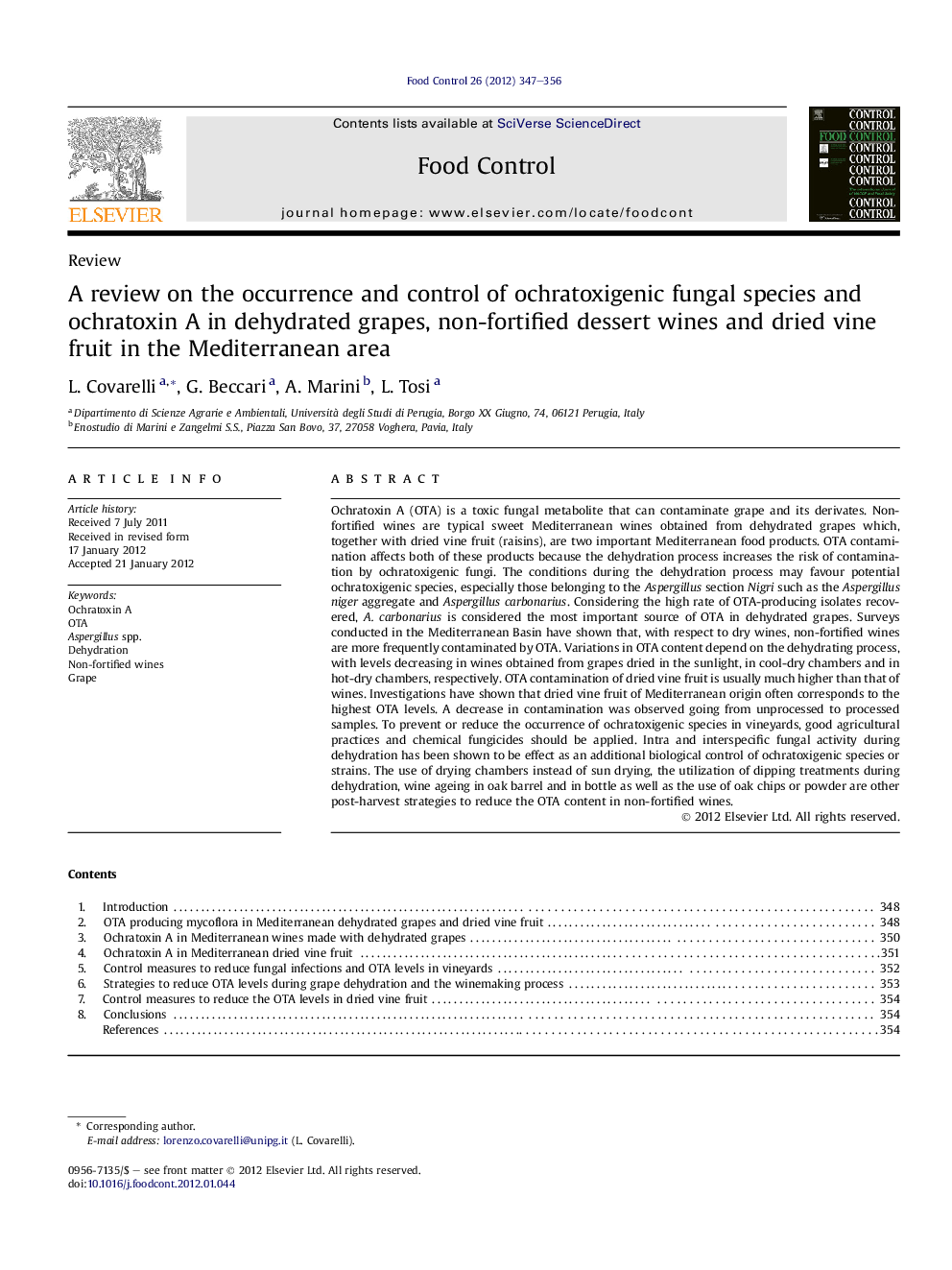| کد مقاله | کد نشریه | سال انتشار | مقاله انگلیسی | نسخه تمام متن |
|---|---|---|---|---|
| 6393864 | 1330456 | 2012 | 10 صفحه PDF | دانلود رایگان |
عنوان انگلیسی مقاله ISI
A review on the occurrence and control of ochratoxigenic fungal species and ochratoxin A in dehydrated grapes, non-fortified dessert wines and dried vine fruit in the Mediterranean area
دانلود مقاله + سفارش ترجمه
دانلود مقاله ISI انگلیسی
رایگان برای ایرانیان
کلمات کلیدی
موضوعات مرتبط
علوم زیستی و بیوفناوری
علوم کشاورزی و بیولوژیک
دانش تغذیه
پیش نمایش صفحه اول مقاله

چکیده انگلیسی
Ochratoxin A (OTA) is a toxic fungal metabolite that can contaminate grape and its derivates. Non-fortified wines are typical sweet Mediterranean wines obtained from dehydrated grapes which, together with dried vine fruit (raisins), are two important Mediterranean food products. OTA contamination affects both of these products because the dehydration process increases the risk of contamination by ochratoxigenic fungi. The conditions during the dehydration process may favour potential ochratoxigenic species, especially those belonging to the Aspergillus section Nigri such as the Aspergillus niger aggregate and Aspergillus carbonarius. Considering the high rate of OTA-producing isolates recovered, A. carbonarius is considered the most important source of OTA in dehydrated grapes. Surveys conducted in the Mediterranean Basin have shown that, with respect to dry wines, non-fortified wines are more frequently contaminated by OTA. Variations in OTA content depend on the dehydrating process, with levels decreasing in wines obtained from grapes dried in the sunlight, in cool-dry chambers and in hot-dry chambers, respectively. OTA contamination of dried vine fruit is usually much higher than that of wines. Investigations have shown that dried vine fruit of Mediterranean origin often corresponds to the highest OTA levels. A decrease in contamination was observed going from unprocessed to processed samples. To prevent or reduce the occurrence of ochratoxigenic species in vineyards, good agricultural practices and chemical fungicides should be applied. Intra and interspecific fungal activity during dehydration has been shown to be effect as an additional biological control of ochratoxigenic species or strains. The use of drying chambers instead of sun drying, the utilization of dipping treatments during dehydration, wine ageing in oak barrel and in bottle as well as the use of oak chips or powder are other post-harvest strategies to reduce the OTA content in non-fortified wines.
ناشر
Database: Elsevier - ScienceDirect (ساینس دایرکت)
Journal: Food Control - Volume 26, Issue 2, August 2012, Pages 347-356
Journal: Food Control - Volume 26, Issue 2, August 2012, Pages 347-356
نویسندگان
L. Covarelli, G. Beccari, A. Marini, L. Tosi,